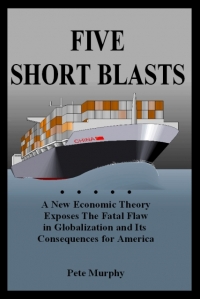Economy better off with less people
While there aren’t necessarily less people in the U.S. than in recent years, there are less people working and there is less spending. Under this scenario, the following report came as a surprise for many people:
Stocks continued to move higher and the Dow Jones Industrial Average hit a new 2009 intraday high Monday, extending a strong run fueled by the flow of easy money to support global economic recovery.
The Dow was recently up 176 points, or 1.7%, to 10199.43. The measure is on pace for a fourth straight daily gain and a new closing high for the year.
 We have about as large a population as ever, but millions have been virtually exiled from the economy by way of job loss, to expired unemployment compensation, on down to complete destitute homelessness.
We have about as large a population as ever, but millions have been virtually exiled from the economy by way of job loss, to expired unemployment compensation, on down to complete destitute homelessness.
They may remain consumers to some extent, but to be sure, they are no longer producers. Let’s not count the few million self-exiles incarcerated, institutionalized, and the several who have dropped out of the system entirely to rough it in the wilderness.
So far we have learned the market is, or was at the time up, a likely hiccup, but that Obama administration spending is also up variously for corporate and public welfare. This is the cause of the stock market hiccup. The number of productive working people doesn’t appear to be climbing, so it is of questionable value to point to rising stocks for one given reporting period:
The jobless rate rocketed to 10.2 percent in October, the highest since early 1983, dealing a psychological blow to Americans as they prepare holiday shopping lists. It was another worse-than-expected report casting a shadow over the struggling recovery.
With unemployment across the board, labor migration from the southern border has taken its own losses for about a year now:
According to informal surveys by the Mexican consulate in Dallas, most of those wanting to return to Mexico cite the sudden scarcity of jobs, fear of deportation and uncertainty about obtaining legal resident status any time soon.
In the last few years, and particularly the last few months, Mr. Sánchez struggled to find work. His earnings dwindled as his children grew up and their needs multiplied.
“People like me, if you don’t work one day, you worry about how to feed your family the next day,” he said. “We as immigrant workers never have stability, even if the economy is doing well. Imagine how things are now.”
 Looking back to the Clinton administration, we can recall the growth of the information technology sector, the IT bubble, which would bust soon after Bush took office. When the bubble was inflating, demand for trained IT people was up.
Looking back to the Clinton administration, we can recall the growth of the information technology sector, the IT bubble, which would bust soon after Bush took office. When the bubble was inflating, demand for trained IT people was up.
Twelve years ago, ordinary Americans who were unskilled or underskilled labor at the time found ways to get certifications like the commonplace MCSE or even a technical degree. Many of them went on to make a decent living in IT for a few years until the tech bubble burst and mass layoffs took place under the first Bush term.
The Clinton IT bubble created a demand for new unskilled laborers to flip burgers, house clean, mow lawns, hammer trusses, lay up drywall, or pour concrete. We added millions of immigrants to fill this gap and they brought families. So for several years, we operated with a larger population than ever, mostly employed and consuming.
But then there was another bubble bust with the housing collapse, an end to many new construction proposals and the banks seizing up new credit for growth capital. Now, we have some low wage laborers making their exit, the unemployed masses, the broken homeless, the long term institutionalized, and a handful of voluntary society dropouts.
That’s less productive people operating in the economy and less consumerism. Yet, if you are one of the remaining productive consumers, life goes on much as before, except perhaps with a bit less crowding in some places, less traffic in other places, and a little more quiet at times.
Does America have an ideally stable optimum population density that is similar in ways, and possibly parallels ecological carrying capacity?
One of the older online domains takes us in for a closer look:
“In 1990 the nonrenewable resources remaining in the ground would have lasted 110 years at the 1990 consumption rates. No serious resource limits were in evidence. But by 2020 the remaining resources constituted only a 30-year supply. Why did this shortage arise so fast? Because exponential growth increases consumption and lowers resources.
So, real progress is found in the maintenance of an equilibrium factoring tech level or affluence, population numbers and the carrying capacity of our living space, which includes to lesser extents, foreign trade with the carrying capacity of places abroad.
Progress is evidently not found, as popular notions would have it, in perpetual growth.
“As both food and nonrenewable resources become harder to obtain in this simulated world, capital is diverted to producing more of them. That leaves less output to be invested in basic capital growth.
Tags: consumerism, overpopulation









